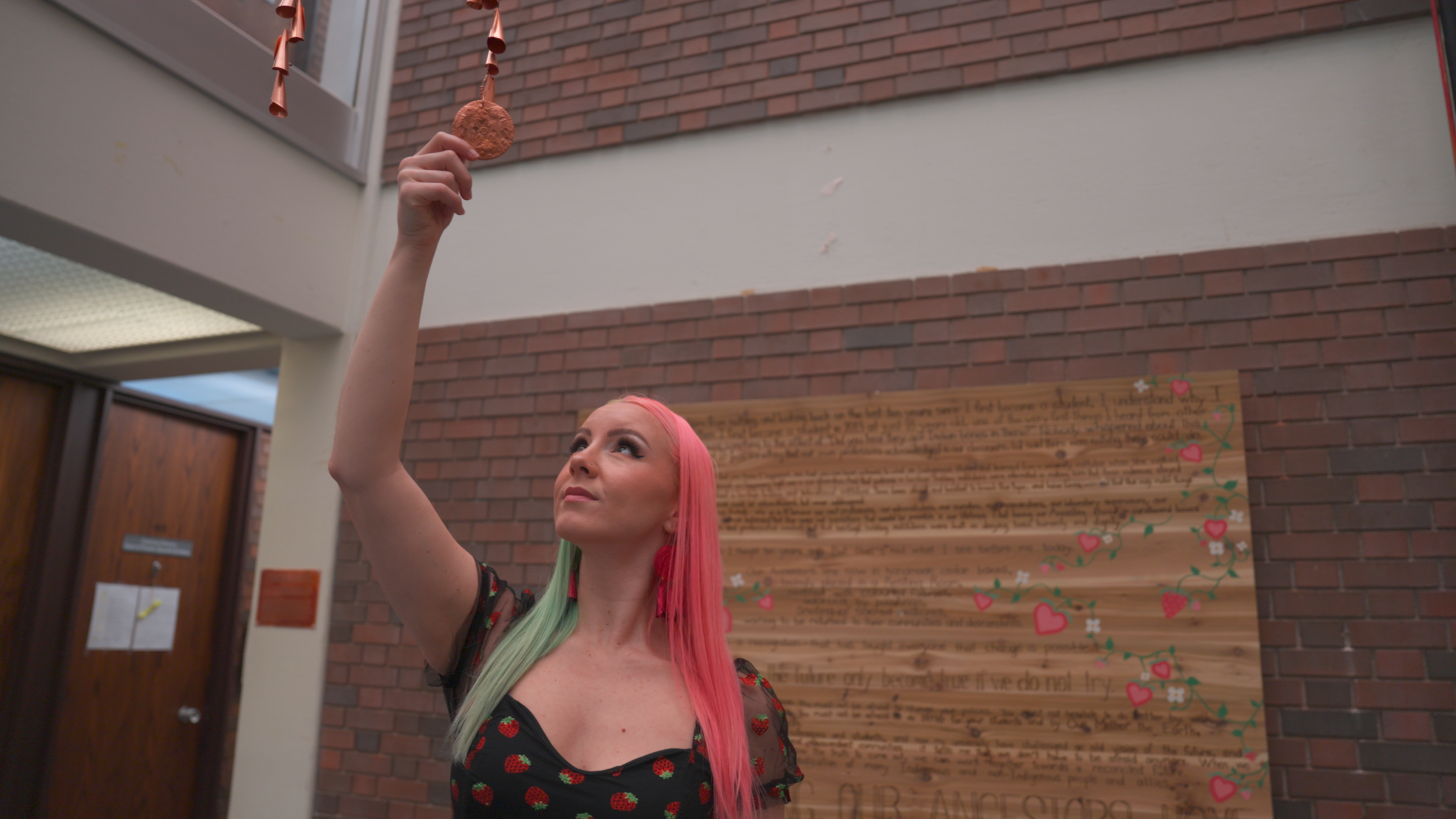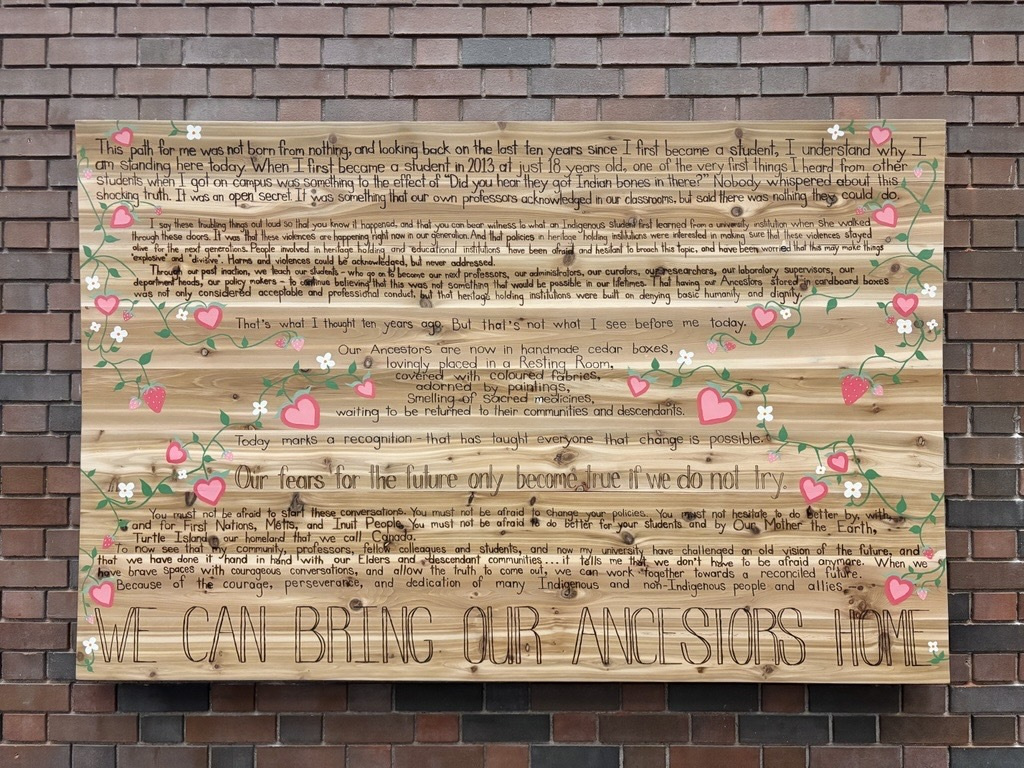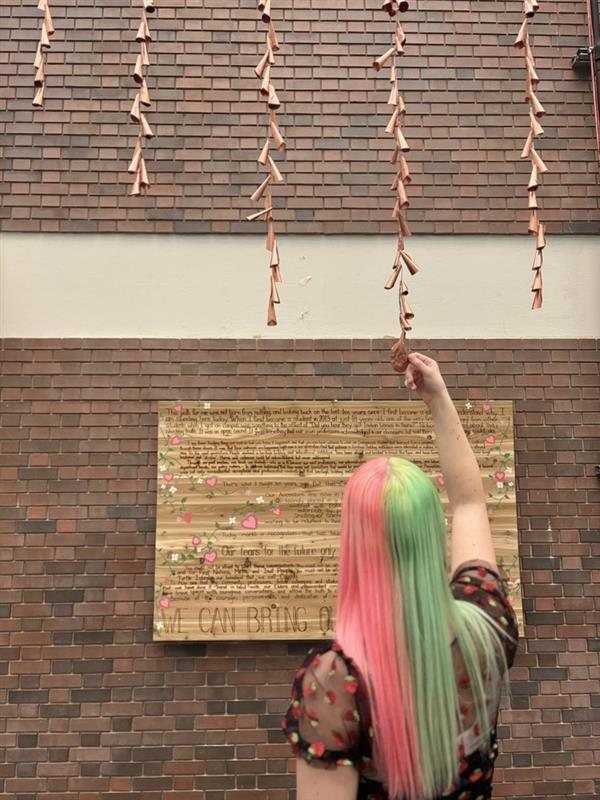
Transforming spaces for generations to follow
Graduate student and Anthropology professor collaborate on art installation
A creative works grant, hundreds of copper circles transforming into jingles and two women carefully listening—these elements have transformed the fourth-floor atrium of Fletcher Argue.
Roots of rematriation and repatriation
Lara Rosenoff Gauvin, Associate Professor with the Department of Anthropology at UM, is co-chair of the Respectful Rematriation and Repatriation Ceremony (RRRC) and has been actively involved since she joined UM in 2019.
Graduate student Savannah Moon joined the RRRC as a student research assistant while working on her thesis centered on rematriation and repatriation of Indigenous Ancestors. She continues to serve as a student representative on the department’s Rematriation and Repatriation committee.
On June 3, 2024, the University of Manitoba apologized publicly for its history related to the inappropriate acquisition and housing of Indigenous Ancestral remains, burial belongings and cultural heritage without consent.
Empowering student voices
Savannah spoke at the RRRC apology, sharing her experience. “When I first became a student in 2013 at just 18 years old, one of the very first things I heard from other students when I got on campus was something to the effect of, “Did you hear they got Indian bones in there?”
Reflecting on how it felt as a young Indigenous student aware of Ancestral remains, Savannah recalled, “Nobody whispered about this shocking truth. It was an open secret. It was something our own professors acknowledged in our classrooms, but said there was nothing they could do.”
Savannah continued to share her story with other students, presenting in Lara’s “Museums, Memory and Witnessing” class. As students contemplated the history and reflected on Savannah’s words, they learned about the RRRC and role of ceremony.
While Lara’s work continued with the RRRC, reflecting on teachings and truth-telling, she found herself working with small copper plates and rolling jingles until she collected buckets full. With the knowledge the students had learned from Lara and Savannah, they were inspired to join in rolling their own jingles from copper plates provided.
A space for reflection
Today, those jingles are a part of the piece known as Sings the Medicines. Strung together and cascading, you can ring the jingles to create a soft and rhythmic chime that fills the space.
Empowered by her own personal experiences as an Indigenous person, Savannah was drawn to the idea of using art to reclaim space, be representative and foster healing.
Looking upward to the jingles is Savannah’s truth hand-burned into a piece titled We Can Bring Our Ancestors Home, a 4×6 treated cedar plaque decorated with hand paintings.
The two women pondered, listened and came together to create sister pieces—the hundreds of jingles that make up Sings the Medicines, and the hand-decorated cedar plaque We Can Bring Our Ancestors Home complement one another, transforming the atrium space into a learning opportunity and create a healing space on the Fort Garry campus.
Lara attributes the display as the result of many people’s thoughts, efforts and prayers. “Elder Carl Stone suggested that the Department of Anthropology display text about the history of our department’s exploitation of Indigenous Ancestors, as well as our current actions of atonement, truth-seeking and apology,” she says. “For many years, an idea for a display did not emerge that fulfilled these aspirations.”
For generations to come, students, staff, faculty and guests will experience the space in an entirely different way; a space reverberating with truth-telling and healing.










